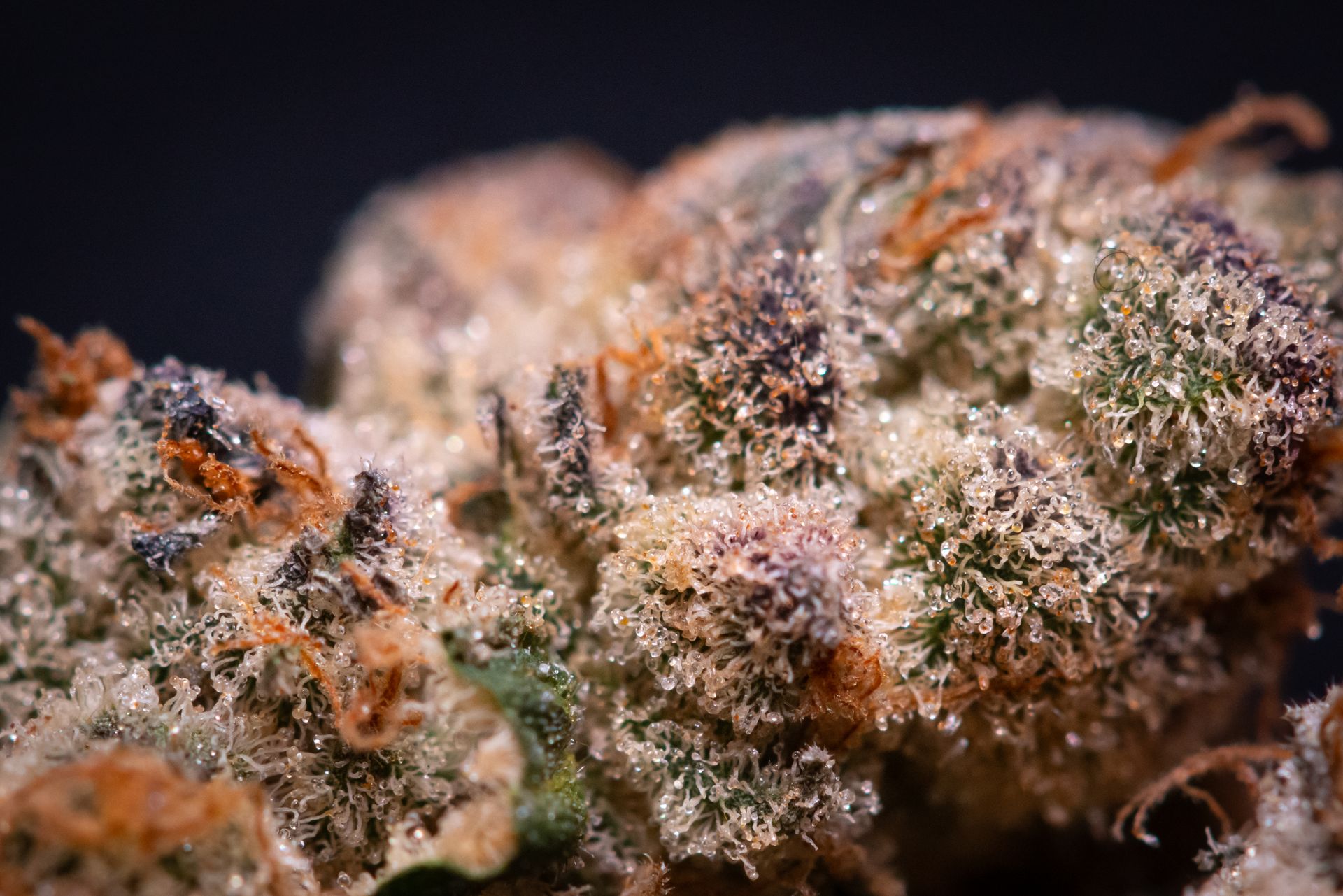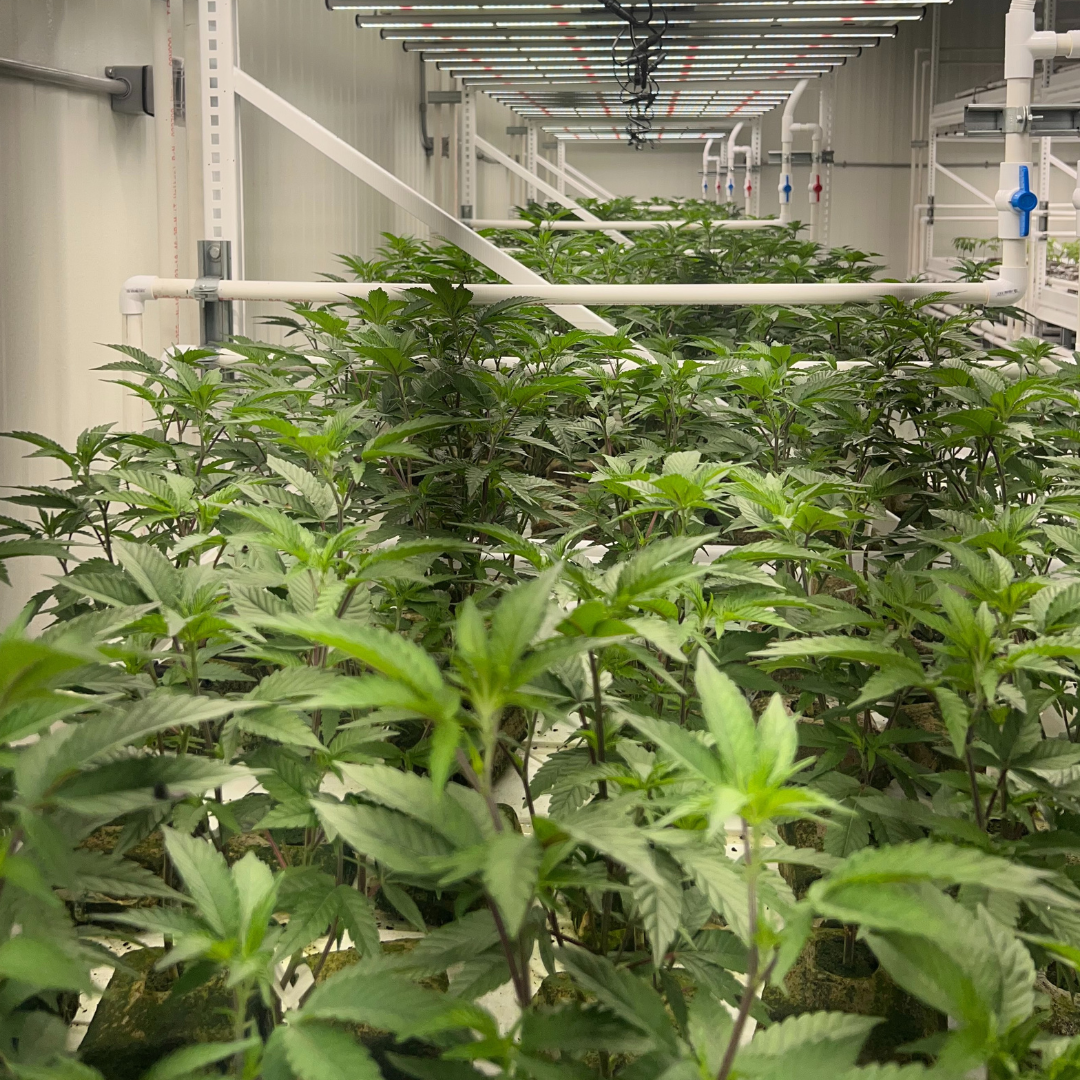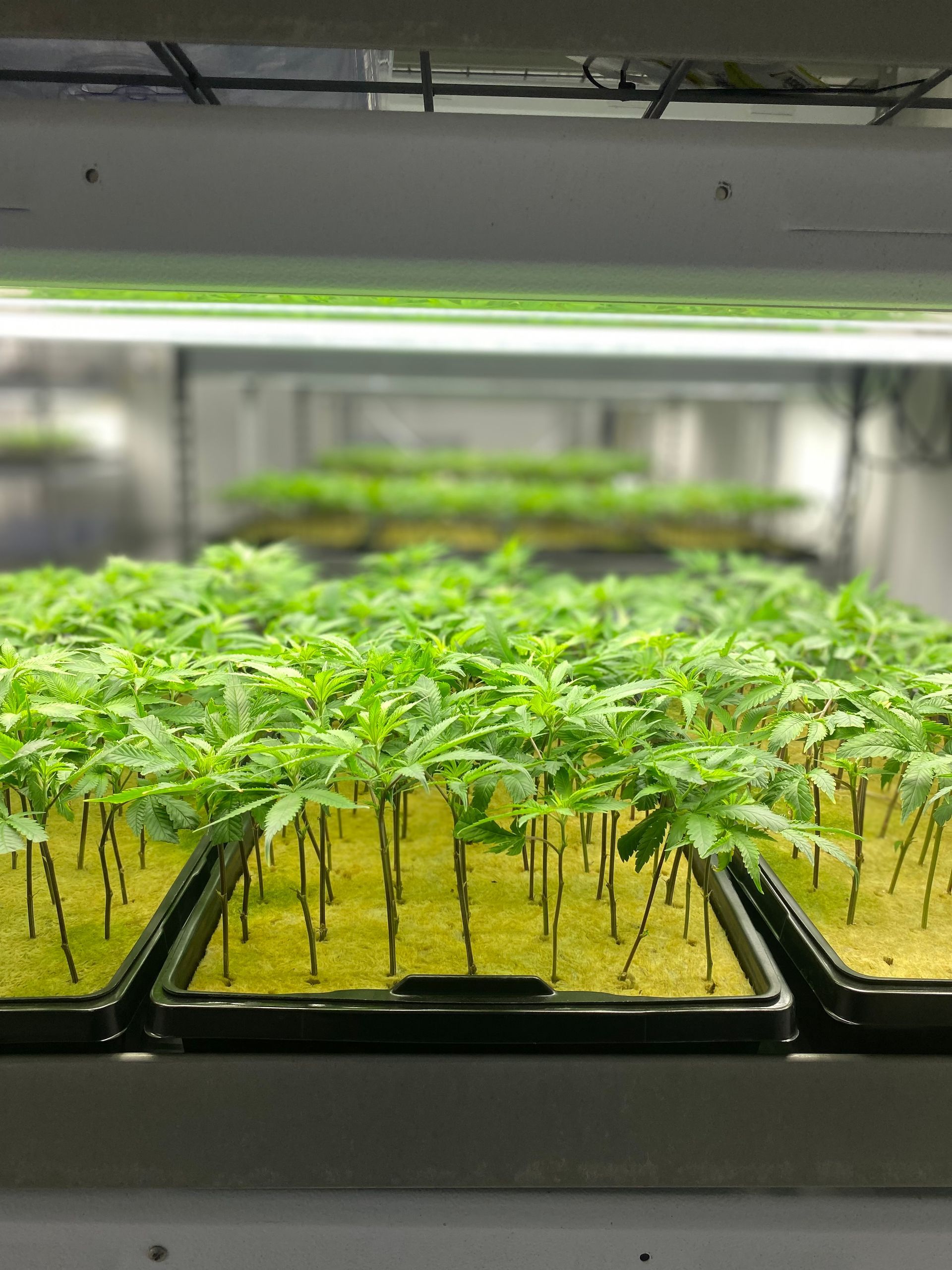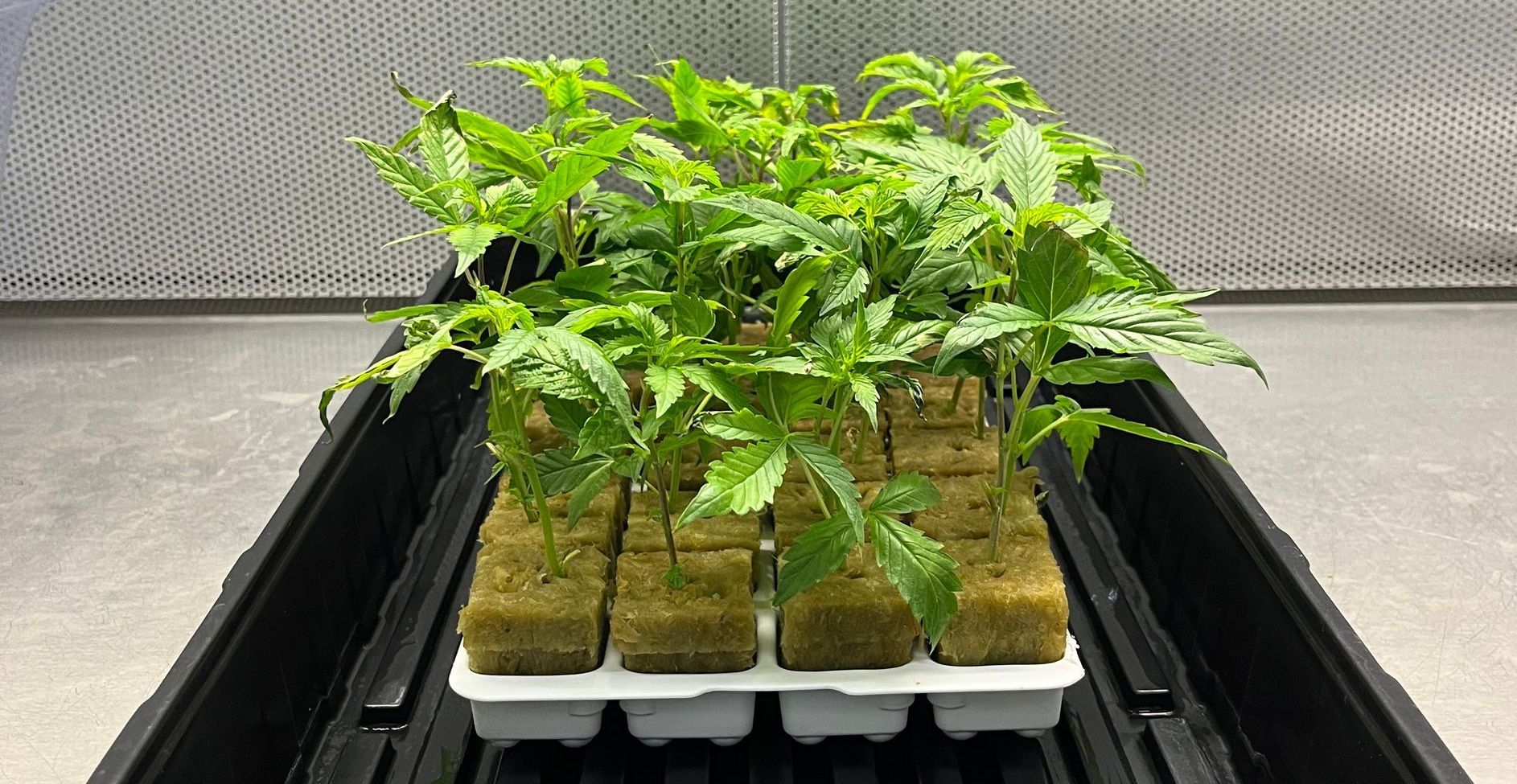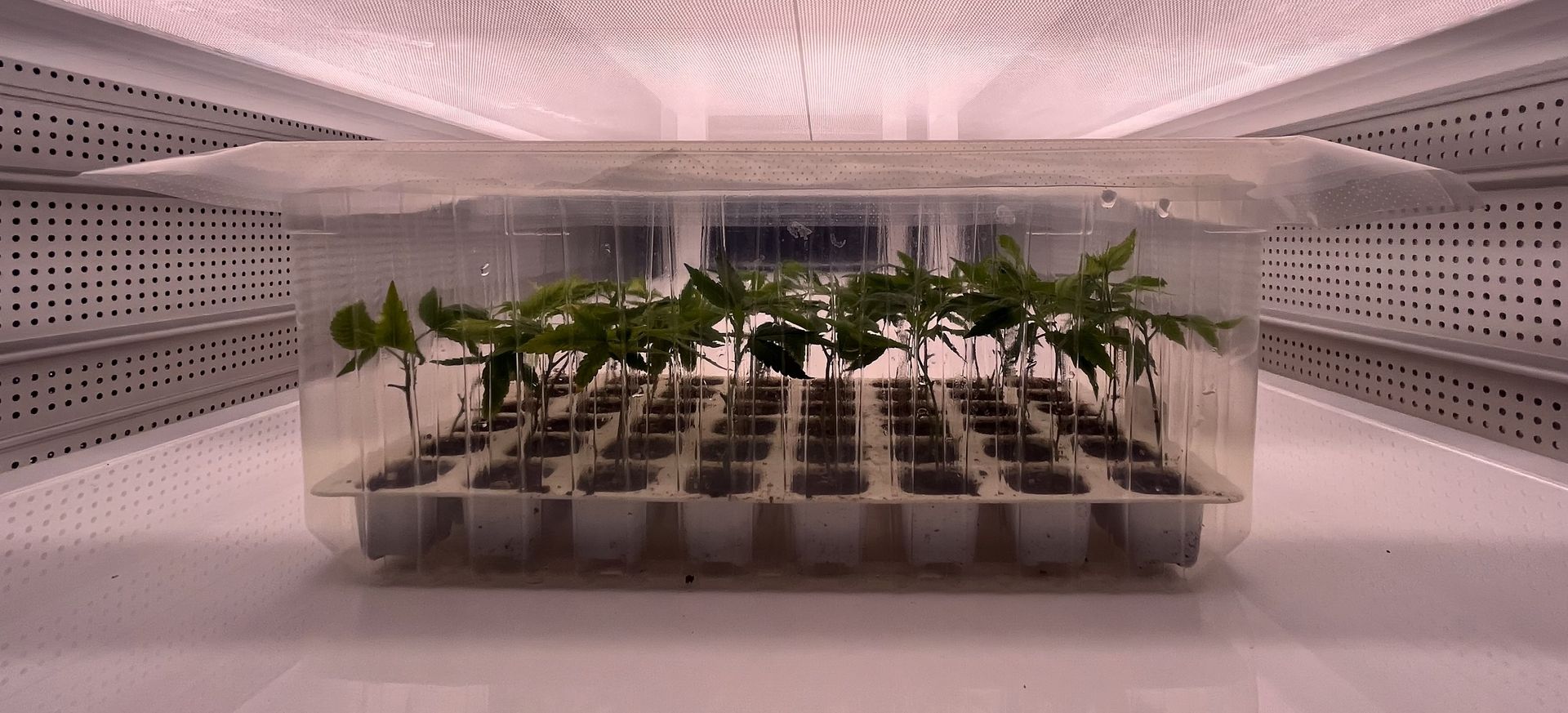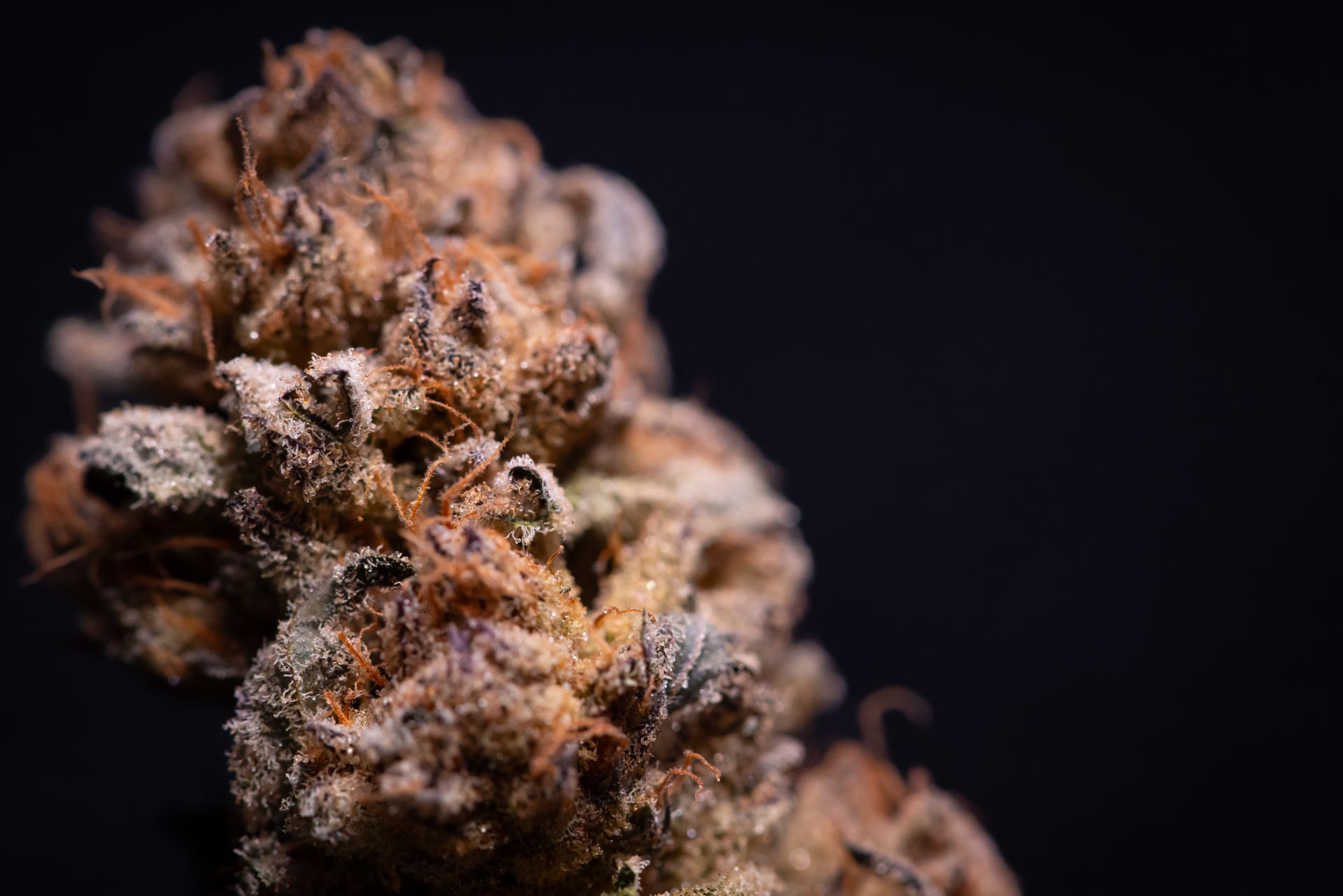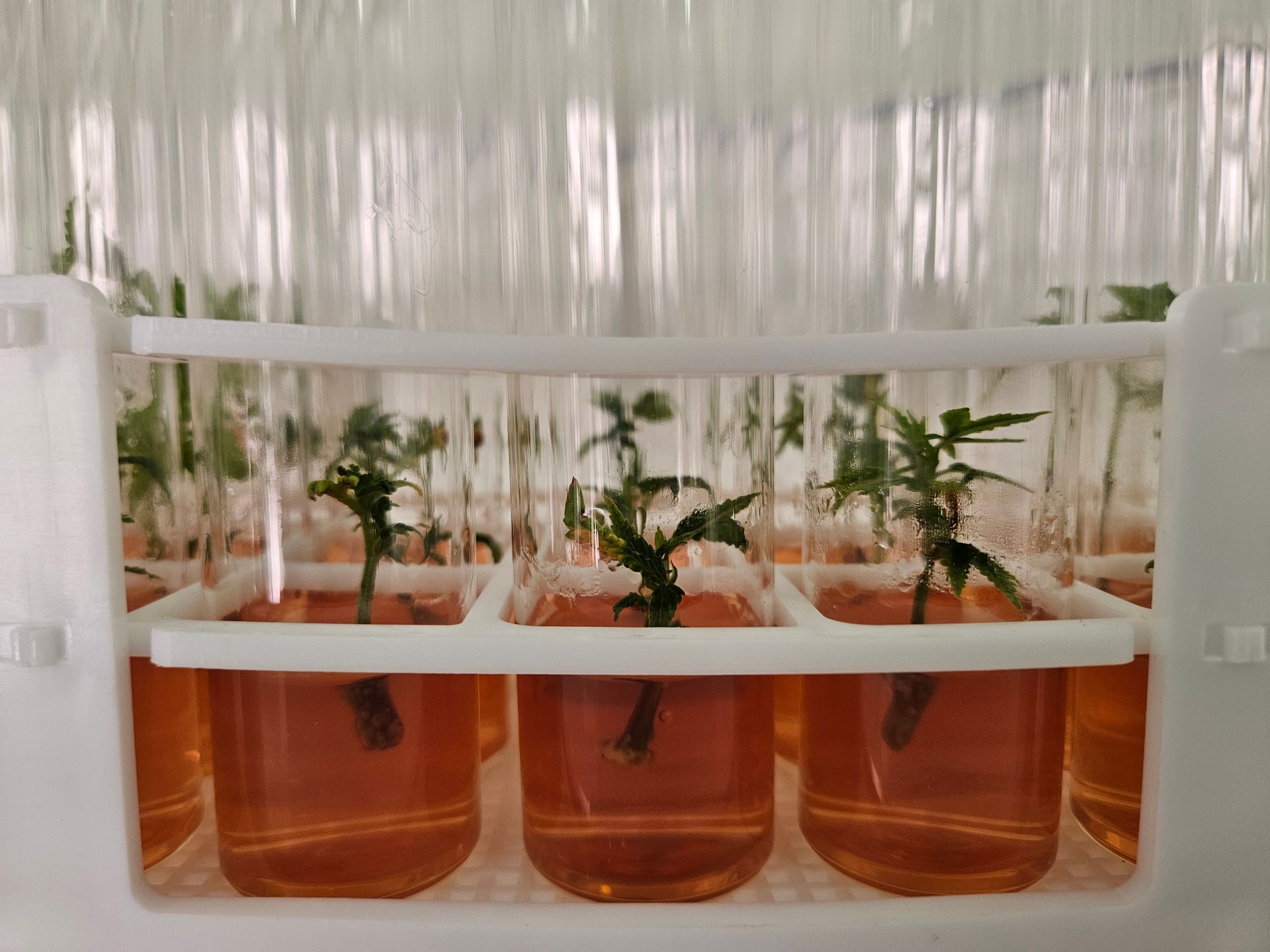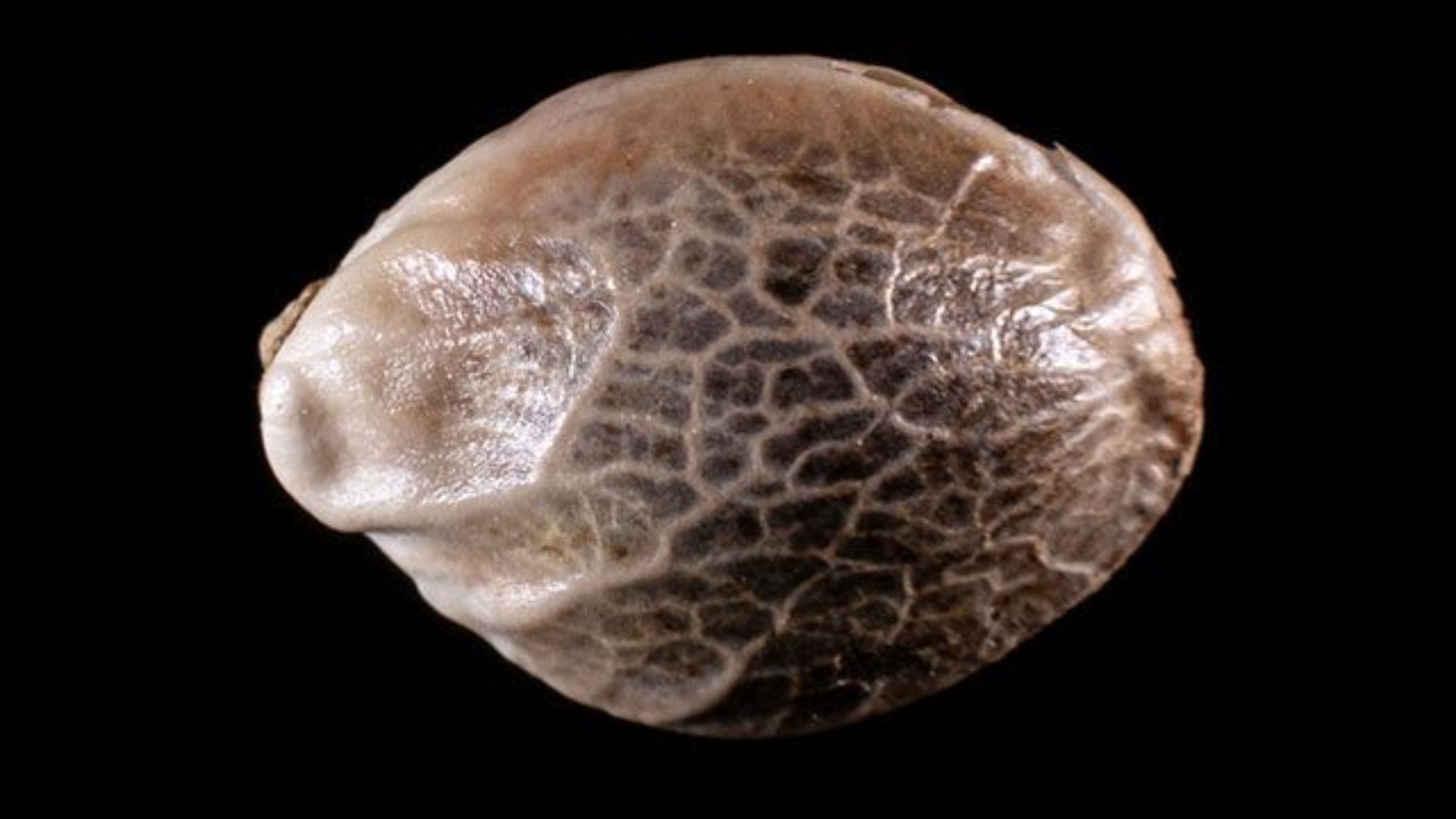Cloning Cannabis Mother Plant: A Step-by-Step Guide
Cloning Cannabis Mother Plant: A Step-by-Step Guide
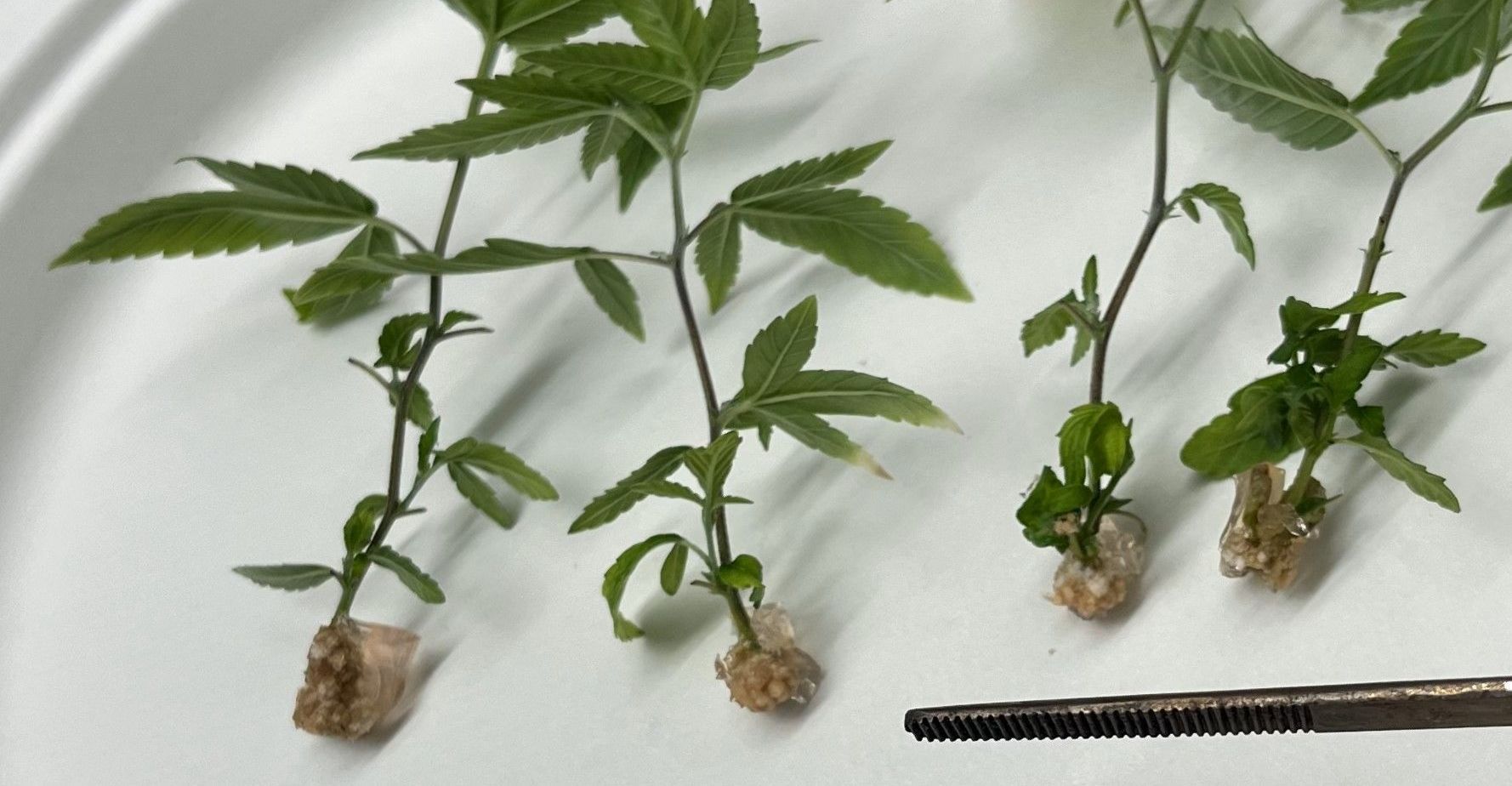
Surprisingly, cannabis cloning can reduce the time to having a mature plant by up to 50% compared to growing from seeds. This makes it a quicker and more efficient process for professional cannabis cultivators and licensed producers. Klonetics Plant Sciences, a leading provider of advanced cultivation solutions, is here to guide you through the step-by-step process of cloning your cannabis mother plant.
Key Takeaways
- Cloning creates genetically identical copies of your mother plant, ensuring consistent yields and growth patterns.
- The ideal time to take cuttings for cloning is during the vegetative stage when the plant is at least 5 weeks old.
- Cloning requires specific equipment and materials to ensure successful root development and transplanting.
- Proper cutting techniques, initial treatment, and maintaining optimal growing conditions are crucial for healthy clone development.
- Monitoring root growth and following best practices for transplanting are essential for a successful cloning process.
Understanding Cannabis Cloning Fundamentals
Cannabis cloning offers a wealth of advantages for cultivators, from ensuring genetic consistency to boosting yields and resource efficiency. By taking cuttings from a healthy cannabis mother plant, growers can produce genetically identical copies that inherit the desirable traits of the parent plant, such as potency, flavor profiles, and growth patterns.
Benefits of Plant Propagation
Cloning cannabis is a popular propagation method that allows growers to continuously produce their favorite strains without the need for recurring seed purchases. Cloning cannabis cuttings results in plants that reach maturity faster than seed-grown counterparts, as the clones already have established root systems.
Genetic Consistency and Yield Control
The genetic uniformity of clones ensures consistent potency, aroma, and yields across a cultivation operation. This level of predictability and control is especially valuable for commercial cannabis producers, who can optimize their operations and production planning.
Essential Equipment and Materials
Successful cannabis cloning requires a few essential tools and materials, including sharp, clean cutting implements, rooting hormone, and a suitable growing medium like rockwool cubes. Proper lighting, such as low-intensity fluorescent T8 or T12 bulbs, is crucial for stimulating root development. Maintaining ideal temperature (72-78°F) and humidity (70-80%) levels is also key for optimal cloning outcomes.
Selecting and Preparing Your Mother Plant
When it comes to cloning cannabis, the selection and preparation of your mother plant are crucial steps. At Klonetics Plant Sciences, we emphasize the importance of choosing a mother plant with desirable traits such as high yield, robust health, and the desired THC or CBD content. The plant should be in the vegetative stage, ideally at least 5 weeks old from seedling, to ensure optimal growth and development.
For better rooting success, select straight branches with at least 3 nodes. Proper pruning and maintenance of the mother plant are essential for producing healthy clones. Consider factors like branching structure, aroma, and flavor when selecting a mother plant for cloning. Maintaining cannabis mother plants and cannabis mother plant pruning are vital to ensure a consistent and reliable supply of high-quality clones.
"The key to successful cloning lies in the health and vigor of the mother plant. By carefully selecting and preparing our mother plants, we can ensure that our clones inherit the best genetic traits and thrive in their new environments."
Prior to taking cuttings, it's essential to ensure that the mother plant is free from pests and diseases. Regular inspection and implementation of preventive measures are crucial for maintaining the plant's overall health and vitality. By following these guidelines, you can be confident that your mother plant will provide a reliable source of high-quality clones for your cannabis cultivation operations.
Cloning Cannabis Mother Plant
Cloning your cannabis mother plants is a crucial step in maintaining a consistent and high-yielding cultivation operation. The process of cannabis cloning techniques involves taking clean, healthy cuttings from your mother plants and propagating them to create genetically identical offspring.
Taking Clean Cuttings
To ensure the success of your cloning cannabis cuttings, it's crucial to take clean, uncontaminated cuttings from your mother plants. Use a sharp, sterilized knife or razor blade to make a clean, 45-degree angle cut just below the third node of the chosen branch. Carefully remove the lower leaves to help the cutting retain water during the initial rooting phase.
"Cloning is a cost-effective way to produce consistent, high-quality plants."
Proper Cutting Angles and Techniques
The angle of the cut is important, as it maximizes the surface area for root development. Additionally, be mindful of the cutting techniques used to minimize damage to the stem. Immediately after taking the cutting, place it in clean water to prevent air bubbles from forming in the stem, which can hinder root development.
Initial Treatment and Care
Before placing the cuttings in the rooting medium, apply a rooting hormone to the cut ends to stimulate root growth. Use a rockwool cube or another suitable rooting medium, lightly misted with water, and place the cuttings under a plastic humidity dome for the first 48 hours to maintain moisture levels and prevent the cuttings from drying out.
Creating Optimal Growing Conditions
At Klonetics Plant Sciences, we understand that creating the ideal environment for cannabis cloning is crucial for ensuring successful propagation. By maintaining precise temperature, humidity, and lighting conditions, we can optimize the growth and development of our cannabis clones.
To foster optimal clone development, we recommend maintaining a temperature range of 72-78°F (22-25°C) and humidity levels between 70-80%. This environment mimics the natural habitat of cannabis plants, providing the perfect conditions for robust root growth and healthy foliage. Additionally, we use low-intensity fluorescent lighting (T8 or T12 bulbs) positioned approximately 30 inches away from the plants, ensuring they receive 18 hours of light per day.
Proper air circulation is also essential to prevent mold growth and promote overall plant health. We regularly mist the cuttings and maintain consistent moisture in the rooting medium, carefully monitoring pH levels to ensure optimal nutrient uptake. By creating a sterile environment, we minimize the risk of pathogens affecting the delicate young clones, further enhancing their chances of successful propagation.
At Klonetics, our cannabis propagation methods and cloning best practices are designed to produce robust, genetically consistent plants that thrive in the cultivation environment. By meticulously controlling the growing conditions, we can ensure the success of our cannabis cloning efforts and deliver high-quality, reliable results to our customers.
Root Development and Transplanting
As your cannabis mother plant cuttings begin to take root, it's essential to monitor their growth and provide optimal conditions for successful transplanting. At Klonetics Plant Sciences, we understand the critical role that proper root development plays in ensuring the overall health and productivity of your clones.
Monitoring Root Growth
After about a week, gently tug on the cuttings to check for resistance. This simple test will help you assess the progress of root growth. Look for the emergence of white hairs, commonly referred to as "root hairs," sprouting from the rooting cubes - this is a clear sign that your cuttings have successfully rooted.
Signs of Successful Rooting
When the roots are visible and the cuttings exhibit resistance to gentle tugging, it's time to prepare for transplanting. This stage marks a crucial milestone in the cannabis mother plant care and marijuana cloning process, ensuring the cuttings have developed a strong foundation to thrive in their new environment.
Transplanting Best Practices
Prepare 1-gallon pots with a soilless, peat- or sphagnum-based growing medium. Ensure the soil level in the new pot is flush with the top of the rooting cube to prevent drying out. Water the transplants intensely for the first week, maintaining a water temperature below 70°F. Proper drainage and avoiding overwatering are essential to prevent root rot and promote healthy root development.
Conclusion
Cloning cannabis mother plants is a valuable technique for maintaining genetic consistency and producing high-quality crops. By following proper cloning cannabis mother plant procedures, selecting healthy mother plants, and maintaining optimal growing conditions, cultivators can successfully propagate their favorite strains. Klonetics Plant Sciences offers advanced solutions for professional cannabis cultivators, focusing on scientific innovation and genetic integrity.
Mastering the art of cannabis cloning techniques requires patience, attention to detail, and a commitment to best practices in cannabis cultivation. Whether you're a professional grower or an enthusiastic home cultivator, understanding the fundamentals of cloning can help you preserve the genetics of your favorite cannabis strains and ensure consistent, high-yielding harvests.
At Klonetics Plant Sciences, we're dedicated to empowering cannabis cultivators with the knowledge and tools they need to thrive. By combining our expertise in plant science with a passion for innovation, we strive to elevate the art of cannabis cultivation and contribute to the success of growers across the industry.
FAQ
What are the benefits of cloning cannabis mother plants?
Cloning cannabis offers numerous advantages, including genetic consistency, faster growth, and resource efficiency. Clones inherit desirable traits from the mother plant, ensuring uniform potency, flavor profiles, and growth patterns.
What essential equipment is needed for cloning cannabis?
Essential equipment for cloning includes sharp, clean cutting tools, rooting hormone, growing medium (e.g., rockwool cubes), and a humidity dome. Proper lighting, such as low-intensity fluorescent T8 or T12 bulbs, is also crucial for successful cloning.
How do I select and prepare a cannabis mother plant for cloning?
Choose a mother plant with desirable traits such as high yield, robust health, and desired THC or CBD content. The plant should be in the vegetative stage, ideally at least 5 weeks old from seedling. Prepare the mother plant by ensuring it's free from pests and diseases, and practice proper pruning and maintenance.
What is the process for taking cannabis clones from the mother plant?
Take cuttings using a sharp, clean knife or razor blade, making a 45-degree angle cut just below the 3rd node of the chosen branch. Remove lower leaves and immediately place the cuttings in clean water. Apply rooting hormone to the cut ends before placing them in the rooting medium, such as a rockwool cube.
How do I create the optimal growing conditions for cannabis clones?
Maintain a temperature range of 72-78°F (22-25°C) and humidity levels between 70-80% for optimal clone development. Use low-intensity fluorescent lighting (T8 or T12 bulbs) positioned about 30 inches away from the plants, providing 18 hours of light per day. Ensure proper air circulation to prevent mold growth and regularly mist the cuttings to maintain moisture levels.
How do I monitor root development and transplant the cannabis clones?
Monitor root growth by gently tugging on the cuttings after about one week to check for resistance. Look for white hairs sprouting from the rooting cubes as a sign of successful rooting. Once roots are visible, transplant the clones into 1-gallon pots with a soilless peat- or sphagnum-based mixture, ensuring the soil level is flush with the top of the rooting cube.



